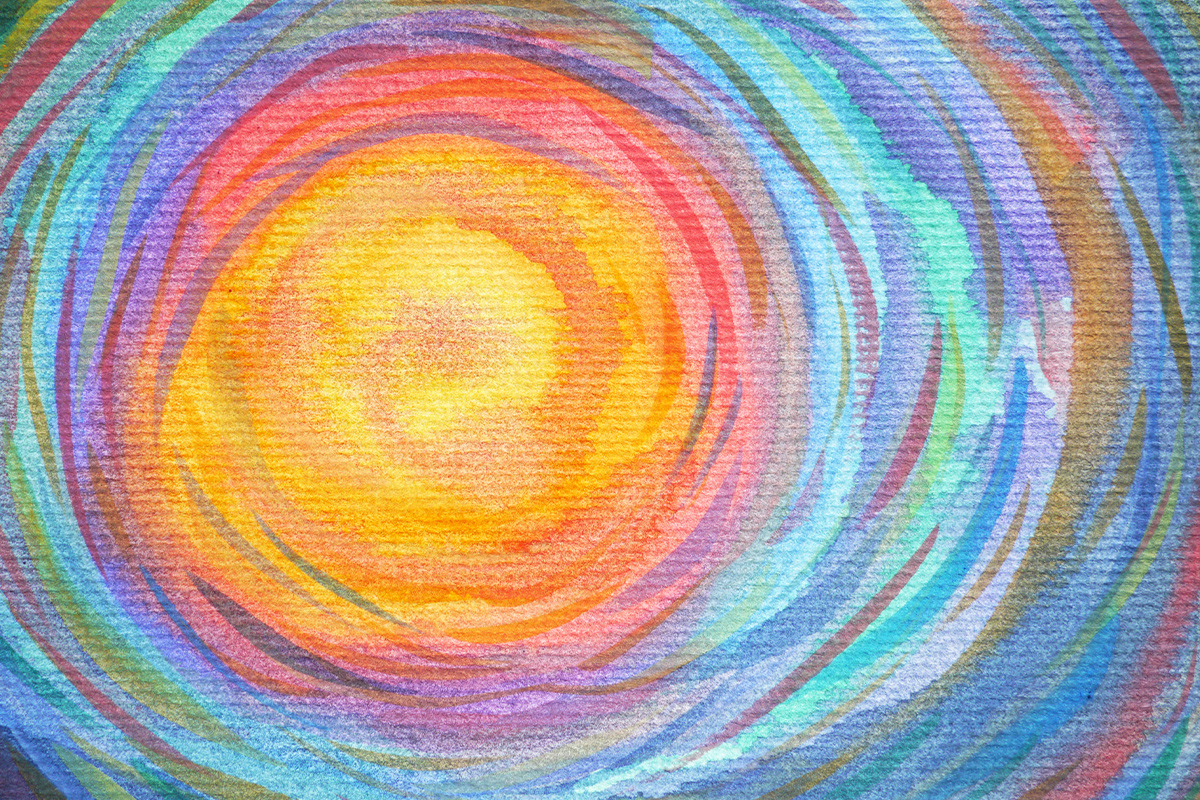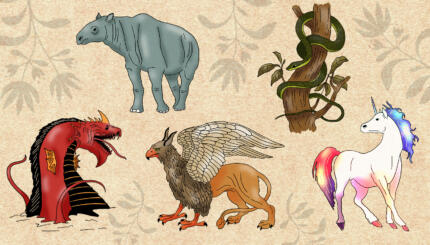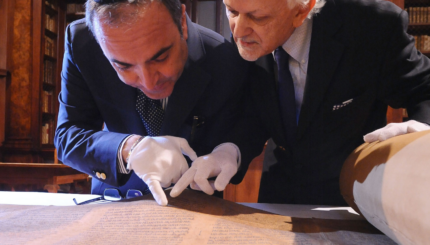Preventing and curing illness and disease is a universal human preoccupation. Jews have been tremendously influential in the history of Western medicine and their reputation as formidable healers reaches back into classical antiquity.
Who Creates Illness and Heals?
In the Bible, God is the most often identified source for disease and healing (Exodus 15:26), and the most common cause for God sending disease is sin (Deuteronomy 28:27).
God flatly declares, “I wound and I heal (Deuteronomy 32:40).” It would have been logical, therefore, to conclude that human medicine and healing are actually contravening the divine will.
Jewish tradition does not accept this line of argument, however (Shabbat 82b), and instead argues that the human attempts at healing are analogous to the human cultivation of the earth: a necessary activity if human life is to thrive (Midrash Shmuel). The appropriateness of healing incantations is also debated, one side arguing that a variety of healing practices are de facto magic prohibited by the Torah, while others permit any remedy meant for healing or the protection of health (Horayot 13b; Shabbat 67a-67b; Tosefta Shabbat 7:21; Yerushalmi Shabbat 6:9).
With your help, My Jewish Learning can provide endless opportunities for learning, connection and discovery.
Just as Jews believed that illness can have supernatural origins, it can likewise be treated via magical, theurgic, and other supernatural means. In practice, all this has meant that amulets, spells, exorcisms, and potions were a regular part of the healer’s arsenal of treatments.
In the Dead Sea Scrolls, evil spirits are regarded as the source of many illnesses, an idea that finds parallels in the Gospel accounts of Jesus’ healing ministries. Among the Dead Sea Scrolls, there exists a fragmentary text (4Q560) that is a collection of protective formulae for fending off demonic attack. Specifically, it deals with protection against fevers, tuberculosis, chest pain, and the dangers of childbirth. Other texts (4Q510-11; 11Q11) deal with the binding of disease-causing demons.
In rabbinic writings the word for epilepsy, nikhpeh, means to be possessed. Exorcizing spells are therefore included along with other treatments. The Talmud regards demons as the cause of ocular diseases, food poisoning, and other ailments (Pesahim 111b-112a). Witchcraft, spiritual attack by another human being, was also an accepted explanation for disease. In the Talmud an opinion is recorded that “99 out of 100 die from an evil eye (Bava Metzia 107b).”
Myriad Methods
Rabbinic literature preserves a vast list of theurgic and magical methods of healing illnesses, whether or not such illnesses are ascribed to attack by evil spirits. Along with
conventional folk remedies involving diet, curative foods (Gittin 67b; Eruvin 29b; Gittin 69a-70a; Avodah Zarah 28a-b; Ketubot 50a; Yoma 83b-84a), exercise, and healthful practices, the Sages would prescribe the recitation of Scriptural verses (the Shema or Psalm 29, for example) and incantations, called refuot(healings). Talmud Shabbat 66b-67a and Gittin 67a-69a record examples of such healing incantations.
The very act of studying Torah serves as a treatment for illness, according to Rabbi Joshua ben Levi (Eruvin 54a). Rabbi Judah declares sacred study “a drug for the entire body.”
Angels, or in a few cases demons, could be invoked to effect a recovery (Shabbat 67b; Sanhedrin 101a). Tractate Shabbat lists the names of the healing angels: Bazbaziah, Masmasiah, Kaskasiah, Sharlai, and Armarlai. Demons, presumably the sources of a given affliction, could be summoned in order that they might be adjured, bound, and/or exorcised.
Amulets and talismans were frequently used both as preventatives and as remedies (Shabbat 67a), though again, some sages strongly disapproved of such devices. Tractate Shabbat discusses whether one may go in public on the Sabbath with healing charms (one is permitted only to carry a limited number of things on the day of rest), including locust eggs (for an earache), fox tooth (for sleep disorders), or a nail from a gallows (for an inflammation).
Items imbued with kedushah, spiritual power, such as leftover wine from holiday Kiddush, or olive oil blessed for use in a Hanukkah menorah, were also felt to have extra medicinal power. This also raises the point that particular foods and herbs were often suggested to counteract illnesses. In rare instances, this even included non-kosher meats.
Mishnah Yoma 8 sets the precedent that non-kosher food may be consumed if it has a medicinal purpose. Examples are given in the commentary to that Mishnah (Yoma 84a) of treatments that include donkey flesh (for jaundice) or dog liver (for rabies).
Like Curing Like
In the talmudic age, remedies were mostly based on the principle of similia similibus curantur, using natural materials and treatments that seemed to have some analogous/symbolic association with an illness. An example of this homeopathic approach would be using parts of a bush–think of “burning” bush–to obtain a cure for a fever (Ketubot 50a; Gittin 69a; Shabbat 67a).
This use of material chosen for its “logical” suitability as a treatment dominates in both early Jewish medicinal and magical texts. Occasionally, rabbinic literature will describe a medicinal recipe containing noxious ingredients, such as animal excrement, earth from a grave, or gall. Poultices, curative broths, and topical mixtures, again frequently crafted from the most unlikely materials, were also common (Gittin 68b-69a).
Cupping and bloodletting, well-established traditional treatments of antiquity, continued to enjoy favor, even though the Talmud itself expresses serious doubts about the efficacy of the former.
Faith healing–the belief that certain people had the power to heal residing in their touch–also appears in a famous passage in Tractate Berakhot. Two Rabbis in particular, Hiyya and Yohanan, were famous for having this healing power (Berakhot 5b).
The synagogue of antiquity was not only a place of sacred assembly, but also a center for healing. Some early Church Fathers railed bitterly because their congregants were entering Jewish places of worship in search of treatment for their ailments. These complaints were often accompanied by accusations of Jewish sorcery, which suggests that various forms of spiritual and/or magical healing were common practice.
Jewish Healing Post-Antiquity
By the medieval period, Jewish medicine was increasingly based on naturalistic premises, which is to say that Jews were educated in the Galenic principles of the “four humors” as etiological theory and as a diagnostic tool. Treatments that were more empirically grounded, as opposed to magical and homeopathic, were becoming a larger part of medical practice. In fact, Jews became famous and sought-after as practitioners of scholarly Greek-style healing.
Still, whether provided by folk healers or scholastic healers, most medicine continued to be based on a hodgepodge of natural and supernatural assumptions and a melange of natural and magical treatment regimes.
Jews were enthusiastic in applying the Arab elaborations on the Greek methods of medicine during the Middle Ages and began making their own unique contributions using the new methods. Outstanding Jewish physicians, like the philosopher Maimonides, championed naturalistic theories of disease etiology and treatment over more fantastic traditional assumptions.
Jews embraced the subsequent scientific revolutions in medicine and as a result, traditional folk healing has been pushed to the periphery of Jewish life in recent centuries. Now it is mostly the domain of communities who resist the influences of modernity, such as certain hasidic groups, or among Oriental Jewish communities who are still only a generation or two away from more traditional folkways. Interest in non-Western healing methods, however, is on the rise, and many Jews are re-incorporating traditional Jewish healing practices of prayer, healing touch, and herbal medicine into their treatment.
Reprinted with permission from the Encyclopedia of Magic, Myth, and Mysticism (Llewellyn Worldwide).
Hanukkah
Pronounced: KHAH-nuh-kah, also ha-new-KAH, an eight-day festival commemorating the Maccabees' victory over the Greeks and subsequent rededication of the temple. Falls in the Hebrew month of Kislev, which usually corresponds with December.
Kabbalah
Pronounced: kah-bah-LAH, sometimes kuh-BAHL-uh, Origin: Hebrew, Jewish mysticism.
Mishnah
Pronounced: MISH-nuh, Origin: Hebrew, code of Jewish law compiled in the first centuries of the Common Era. Together with the Gemara, it makes up the Talmud.
Shabbat
Pronounced: shuh-BAHT or shah-BAHT, Origin: Hebrew, the Sabbath, from sundown Friday to sundown Saturday.
Shema
Pronounced: shuh-MAH or SHMAH, Alternate Spellings: Sh'ma, Shma, Origin: Hebrew, the central prayer of Judaism, proclaiming God is one.
Talmud
Pronounced: TALL-mud, Origin: Hebrew, the set of teachings and commentaries on the Torah that form the basis for Jewish law. Comprised of the Mishnah and the Gemara, it contains the opinions of thousands of rabbis from different periods in Jewish history.
Torah
Pronunced: TORE-uh, Origin: Hebrew, the Five Books of Moses.



